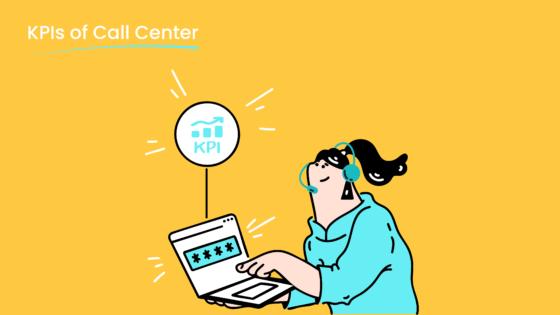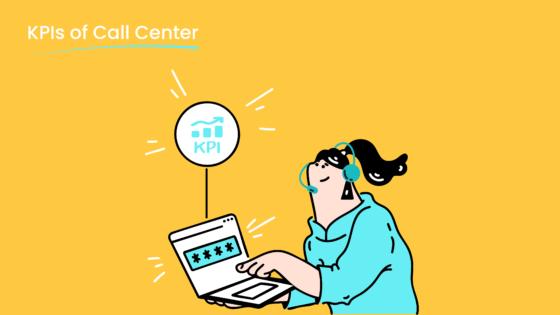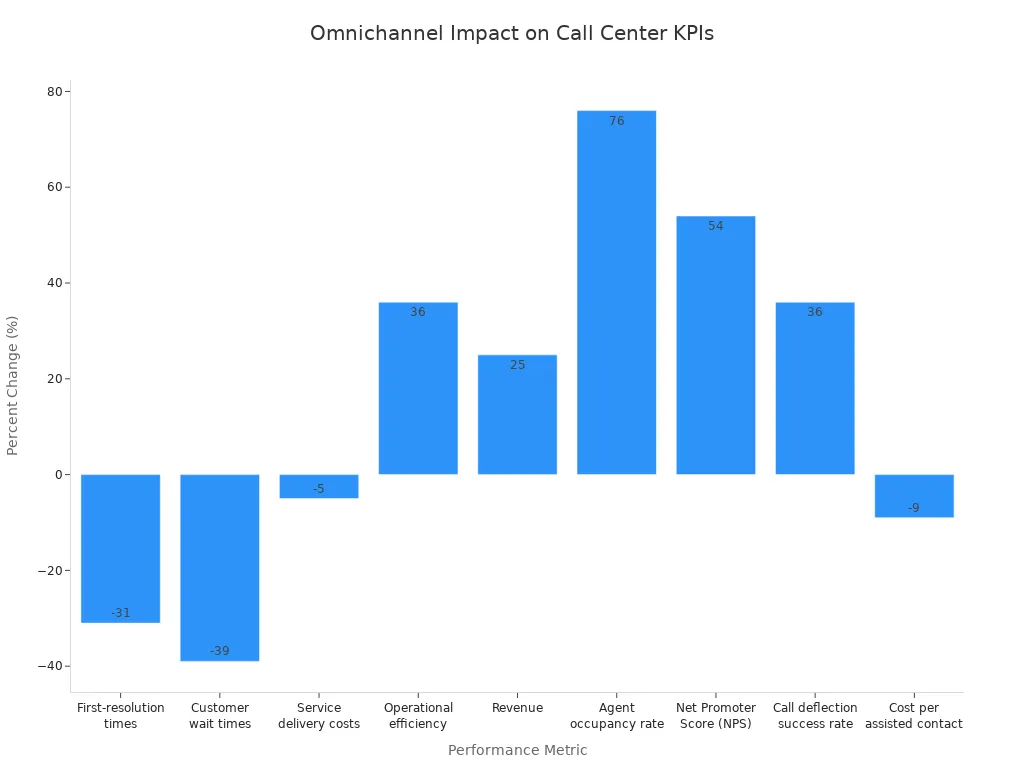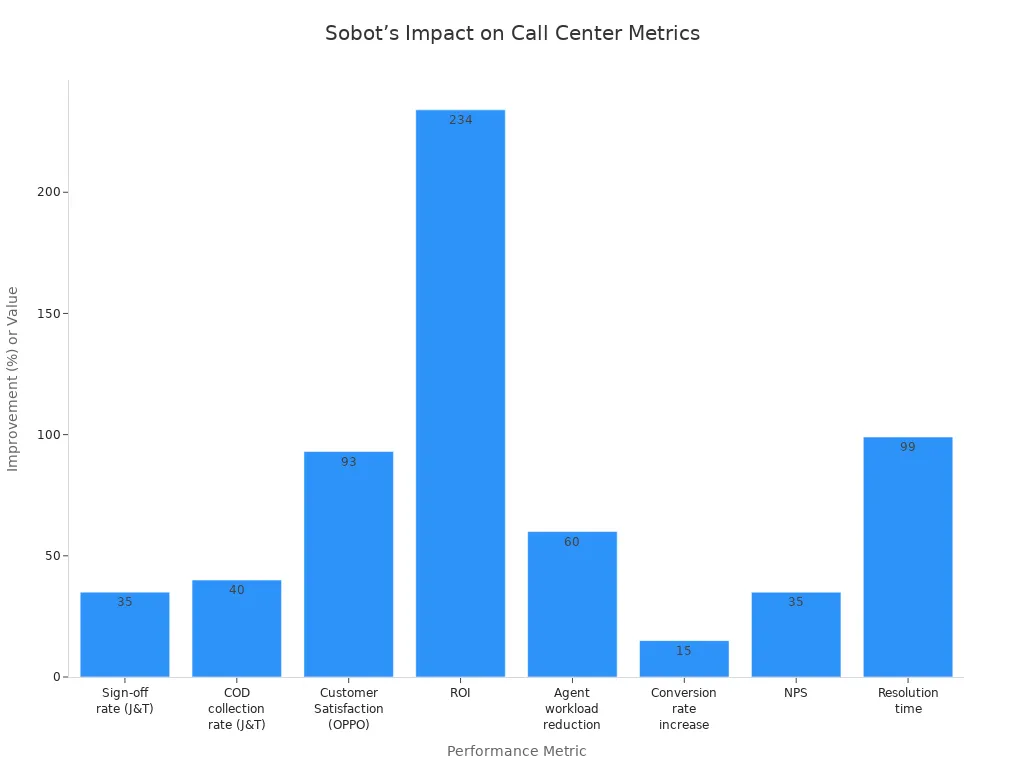Boost Call Center Agent Performance with These Strategies

To improve call center agent performance in 2025, companies are turning to actionable strategies that deliver measurable gains in customer service, agent satisfaction, and operational efficiency. Studies reveal that boosting agent satisfaction can increase customer satisfaction scores by 62%, while implementing omnichannel approaches through a Sobot call center can raise customer satisfaction by up to 30%. Many organizations recognize the strong connection between agent performance, customer experience, and the overall success of their contact centers. Providing training and career growth opportunities motivates 72% of agents and reduces annual attrition by 15%. Sobot, a leader in intelligent contact center solutions, leverages Sobot AI and advanced tools to empower teams, ensuring every service interaction results in improved customer experience and higher satisfaction. Companies that invest in the right service strategy, technology, and training with Sobot achieve significant improvements in call center agent performance and overall customer service excellence.
AI and Automation Strategies

AI and automation have transformed call center management, offering new strategies for agent performance and contact center productivity. Companies now use advanced tools to streamline workflows, reduce repetitive tasks, and support agents in real time. These strategies help call centers achieve higher customer service standards and drive measurable improvement in agent productivity.
Real-Time Agent Guidance
Real-time agent guidance tools play a key role in performance optimization. AI-powered systems provide instant prompts, dynamic scripting, and sentiment analysis during calls. These features help agents respond quickly and accurately, improving agent performance and reducing errors. For example, real-time AI can suggest next-best actions or alert agents to customer emotions, leading to better conversations and higher customer satisfaction. In industries like healthcare and finance, these tools ensure compliance and accuracy, which boosts both agent productivity and contact center productivity. Sobot’s Voice/Call Center platform offers real-time monitoring and analytics, allowing supervisors to intervene and support agents instantly.
Automate Repetitive Tasks
Automation removes tedious tasks from agents’ daily routines. Common automated tasks include call routing, data entry, and after-call documentation. According to UiPath, employees using AI and automation save over ten hours per week, which increases agent productivity and reduces burnout (source). Automated workflows also improve first call resolution rates and lower average handle times. Sobot’s intelligent IVR and AI-powered Voicebot automate routine inquiries, allowing agents to focus on complex customer service needs. These strategies lead to significant improvement in call center management and overall productivity.
Sobot Voice/Call Center AI Features

Sobot’s Voice/Call Center AI stands out with its Five-AI System, combining omnichannel, scenario-based, multi-faceted, generative, and secure AI. The platform uses advanced technologies like ASR, NLP, and LLMs to deliver human-like voicebots that resolve over 50% of customer interactions independently. Sobot’s AI Copilot assists agents with real-time suggestions, while AI Insight provides analytics for performance optimization. The system integrates across channels, supports global compliance, and delivers measurable gains in agent performance and contact center productivity.
Tip: Companies using Sobot’s AI-driven call center strategies report up to a 30% increase in sales and a 40% reduction in handling time, demonstrating the power of automation for performance improvement.
Agent Engagement and Well-Being

Agent engagement and well-being play a critical role in driving agent performance and overall productivity in call centers. When agents feel valued and supported, they show higher agent effectiveness, deliver better customer experiences, and contribute to stronger business outcomes. Research shows that agent engagement directly correlates with key performance metrics such as call quality scores and first call resolution rates. High engagement leads to improved morale, increased agent productivity, and a positive cycle of motivation and achievement.
Boost Morale
Call centers can use several strategies to boost morale and enhance agent performance:
- Provide continuous, personalized feedback through regular one-on-one meetings and performance reviews.
- Set clear, achievable goals that align with company objectives, giving agents direction and purpose.
- Offer incentives and public recognition, such as bonuses or awards, to motivate agents and celebrate achievements.
- Invest in ongoing training, coaching, and development opportunities, including workshops and mentorship.
- Foster a positive work environment with open communication and team-building activities.
Recognition programs can decrease voluntary turnover by 31%, and agents who receive regular feedback report higher job satisfaction (Bersin & Associates).
Reduce Burnout
Burnout remains a significant challenge, affecting over 63% of call center agents and contributing to annual turnover rates between 30-50%. Causes include high call volumes, emotional labor, and digital overload. Best practices for reducing burnout include:
- Promoting work-life balance with flexible hours and remote work options.
- Providing resources for stress management, such as wellness programs and mental health support.
- Using technology like Sobot’s unified workspace to streamline tasks and reduce digital overload, which increases agent productivity and reduces stress.
Supportive Work Environment
A supportive work environment strengthens agent engagement and agent performance. Best practices include:
- Hiring agents who fit the company culture and pace.
- Implementing skills-based call routing and providing easy access to information through technology like Sobot’s omnichannel platform.
- Establishing feedback loops and regular check-ins to address issues early.
- Offering continuous improvement training and clear career paths to boost agent effectiveness and retention.
These practices create a culture where agents feel empowered, leading to higher productivity and sustained agent engagement.
Training and Coaching Strategies
Ongoing training and coaching form the backbone of high agent performance in modern call centers. Companies that invest in continuous training and targeted coaching see measurable improvements in customer satisfaction, agent retention, and operational efficiency. These strategies help agents adapt to evolving customer needs and industry standards.
Continuous Learning
Continuous learning programs empower agents by building knowledge, confidence, and problem-solving skills. Microlearning, gamification, and AI-driven simulations allow agents to practice real scenarios in a risk-free environment. These training programs deliver short, focused lessons that help agents quickly master new skills. Regular feedback and quality management processes ensure ongoing skill refinement. Studies show that comprehensive training strategies lead to faster onboarding, higher retention, and improved service quality. AI-enhanced training tailors content to each agent’s strengths and weaknesses, promoting a culture of excellence and adaptability.
Tip: Gamified training modules and soft skills workshops increase agent motivation and participation, leading to better customer experiences.
Personalized Coaching
Personalized coaching stands out as a best practice for boosting agent performance. Data analysis of call recordings and customer feedback identifies individual strengths and areas for improvement. Setting individualized goals based on metrics like average handle time and first call resolution helps agents target specific skills. AI-powered coaching platforms provide targeted insights and real-time feedback, improving performance by up to 20%. Quality management tools streamline performance monitoring and feedback delivery, making coaching more effective. This strategy supports continuous professional development, enhances communication skills, and reduces staff turnover.
- Personalized coaching plans tailor feedback and training to each agent’s needs.
- Consistent coaching fosters stronger customer relationships and higher satisfaction.
- Real-time analytics and speech analysis help coaches address communication patterns and emotional tone.
Sobot Customer Success Stories
Sobot’s commitment to agent performance shines through its customer success stories. Agilent, a global leader in life sciences, partnered with Sobot to transform its customer service operations. By integrating Sobot’s omnichannel workbench and AI-powered chatbot, Agilent achieved a sixfold increase in efficiency and a 25% reduction in costs. The solution enabled 24/7 support, allowing agents to focus on complex issues while automation handled routine inquiries. Agilent’s customer satisfaction score reached 95%, demonstrating the impact of effective training, coaching, and technology integration. Sobot’s unified workspace and analytics tools support best practices in agent development, making continuous improvement a reality.
Knowledge Management for Call Center Productivity
A strong knowledge management system forms the backbone of call center productivity. When agents can access accurate information quickly, they resolve customer issues faster and more consistently. This approach not only boosts contact center productivity but also improves customer satisfaction and reduces operational costs.
Centralized Knowledge Base
A centralized knowledge base allows agents to find answers without delay. Studies show that call centers with integrated systems see dramatic improvements in timeliness and call completion rates. For example, Geisinger Medical Center increased calls completed within 30 minutes from 50% to 95.5% after implementing a centralized system. The table below highlights the impact of such systems on call center productivity:
| Metric | Before Centralization | After Centralization |
|---|---|---|
| Calls completed in 30 minutes | 50% | 95.5% |
| Mean odds ratio (timeliness) | 1 | 22.2 |
Centralized knowledge bases also help reduce telephone wait times and streamline call center management. Sites with better integration report smoother workflows and higher satisfaction.
Easy Access to Information
Easy access to information is essential for contact center productivity. Agents who retrieve information quickly can resolve calls faster, leading to improved first call resolution and reduced call volumes. Sobot’s unified workspace brings all customer data, tickets, and communication channels into one platform. This integration reduces response time by up to 80% and increases agent efficiency by 20%. Agents spend less time searching for answers, which directly enhances call center productivity and supports effective call center management.
Tip: Regularly update the knowledge base and use role-based permissions to keep information accurate and relevant.
Knowledge Sharing Tools
Knowledge sharing tools empower agents and improve call center management. Tools like Helpjuice and Knowmax have reduced common customer inquiries by 37% and improved first call resolution. These platforms offer features such as instant search, analytics, and collaboration, which support structured knowledge sharing and faster onboarding. Sobot’s integration capabilities ensure agents always have access to the latest information, driving both call center productivity and contact center productivity. Continuous monitoring and feedback help refine the knowledge base, making it a valuable asset for ongoing improvement.
Performance Measurement and Feedback
Effective call center management relies on clear performance measurement and structured agent feedback. These practices drive agent performance, support performance optimization, and ensure continuous improvement in customer service.
Set Clear KPIs
Call center management teams use key performance indicators (KPIs) to track agent performance and guide performance optimization. KPIs provide a roadmap for agents and supervisors, making it easier to identify strengths and areas for improvement. The most common KPIs include:
| KPI Name | Description |
|---|---|
| Average Handling Time (AHT) | Time spent handling a customer interaction, including talk and post-call work |
| First Call Resolution (FCR) | Percentage of issues resolved on the first contact |
| Customer Satisfaction (CSAT) | Measures satisfaction after interaction, often via surveys |
| Service Level | Percentage of calls answered within a target timeframe |
| Abandonment Rate | Percentage of customers who hang up before reaching an agent |
| Occupancy Rate | Time agents spend handling interactions versus available time |
| Net Promoter Score (NPS) | Likelihood of customers recommending the company |
Selecting the right KPIs helps call center management align goals with business outcomes and agent performance.
Real-Time Analytics
Real-time analytics play a vital role in call center management. These tools allow supervisors to monitor agent performance as it happens. Real-time dashboards display metrics like customer satisfaction, call volumes, and agent utilization. Sobot’s monitoring and analysis tools provide instant insights, enabling supervisors to make quick decisions and support agents during live calls. Real-time analytics also help with dynamic call routing, fraud detection, and compliance monitoring. By using these tools, call center management can achieve faster performance improvement and higher customer satisfaction (source).
Tip: Real-time analytics empower agents with immediate feedback, leading to better agent performance and more effective performance optimization.
Feedback Loops
Structured feedback loops are essential for agent performance and call center management. Best practices include measuring coaching effectiveness, documenting progress, and involving agents in developing quality scorecards. Data-driven feedback, such as speech analytics and desktop monitoring, helps identify performance gaps and optimize workflows. Sobot’s analysis tools support regular agent feedback and transparent evaluations. Companies that use structured feedback loops see faster quality improvements, higher customer satisfaction, and operational efficiencies. For example, targeted coaching sessions can improve quality scores by 33% and reduce coaching time by 20%.
Regular feedback and coaching motivate agents, reinforce learning, and drive continuous performance optimization.
Omnichannel and Collaboration Strategies
Omnichannel solutions and collaboration tools have become essential strategies for modern call centers. These approaches unify customer interactions across channels, streamline team communication, and drive measurable improvements in customer service and customer satisfaction.
Unified Customer Interactions
Unified customer interactions give agents a complete, real-time view of every customer service touchpoint. Agents can see chat, email, phone, and social media conversations in one place. This strategy eliminates the need for customers to repeat their issues, reducing frustration and improving the overall customer experience. Studies show that unified systems increase first call resolution rates, which leads to higher customer satisfaction, lower operational costs, and stronger customer loyalty. AI-powered tools further enhance these practices by suggesting responses and surfacing relevant knowledge instantly.
- Agents respond faster and more accurately.
- Customers enjoy a seamless journey, no matter which channel they use.
- Companies see improved customer experience and service consistency.
Team Communication
Effective team communication supports high-quality customer service and agent performance. Digital collaboration tools, such as instant messaging and project management platforms, help agents share updates and solve problems quickly. Video conferencing and shared documents keep teams connected, even across remote locations. These practices boost productivity, enhance teamwork, and create a positive work environment.
- Teams align on goals and share important information in real time.
- Cross-training and recognition programs increase flexibility and motivation.
- Better communication leads to faster problem resolution and improved customer experience.
Sobot Omnichannel Solution
Sobot’s omnichannel solution stands out as a leader in customer service technology. The platform unifies all customer interactions, giving agents a single workspace for calls, chats, emails, and social messages. Sobot’s AI Copilot reduces agent workload by 60%, while AI-driven routing ensures customers reach the right agent quickly. Companies using Sobot report a 93% customer satisfaction score and a 234% return on investment. Resolution times drop to under one minute, and agent productivity rises. Sobot supports global scalability, rapid deployment, and robust data security, making it ideal for industries like retail, finance, and logistics.
| Metric | Impact/Result |
|---|---|
| Customer Satisfaction | 93% CSAT (OPPO) |
| Agent Productivity | 60% workload reduction |
| Conversion Rate | 15% increase |
| ROI | 234% return |
| Resolution Time | Under 1 minute |
| Data Security Compliance | ISO27001, GDPR, CSA |

Omnichannel strategies and collaboration practices transform customer service, delivering faster resolutions, higher satisfaction, and a better customer experience across every touchpoint.
Companies that improve call center agent performance see measurable gains in service quality, customer satisfaction, and operational efficiency. Adopting technology, training, and engagement practices streamlines service, reduces costs, and empowers agents. Sobot’s solutions deliver rapid results, such as a 60% reduction in agent workload and a 93% customer satisfaction rate.

Explore these strategies to boost agent performance and share your service success stories.
FAQ
What are the top ways to improve call center agent performance?
Companies see the best results by combining AI tools, continuous training, and clear KPIs. Sobot’s solutions help agents resolve issues faster, boosting agent productivity and customer satisfaction. Studies show that real-time analytics can improve call center agent performance by up to 30%.
How does automation impact agent productivity in call centers?
Automation removes repetitive tasks, allowing agents to focus on complex problems. Sobot’s AI-powered Voicebot and workflow automation increase agent productivity and reduce average handle time. According to UiPath, automation saves employees over ten hours per week.
Why is knowledge management important for call center management?
A centralized knowledge base helps agents find answers quickly. Sobot’s unified workspace improves call center management by reducing response times by up to 80%. Fast access to information leads to higher first call resolution and better call center agent performance.
How can call center managers measure agent performance effectively?
Managers use KPIs like average handle time, first call resolution, and customer satisfaction scores. Sobot’s real-time analytics and monitoring tools provide instant feedback, making performance measurement simple and accurate. Clear metrics support continuous improvement in call center agent performance.
What makes Sobot’s omnichannel solution unique for call center agent performance?
Sobot’s omnichannel platform unifies all customer interactions in one workspace. Agents handle calls, chats, and emails without switching systems. This integration increases agent productivity, reduces workload by 60%, and raises customer satisfaction to 93%, as seen in real-world case studies.
See Also
Enhancing Call Center Results Through Effective Monitoring Techniques
Top Strategies For Maintaining Quality In Call Centers
Understanding The Efficient Operation Of Call Center Automation
Effective Methods For Supervising Live Chat Support Teams
Comprehensive Overview Of Quality Management Systems In Call Centers
